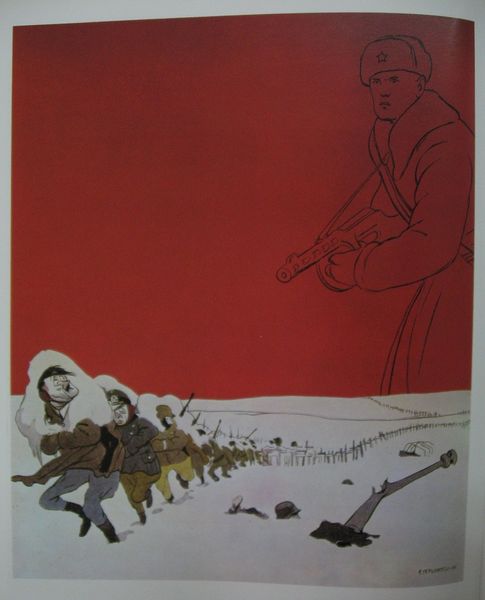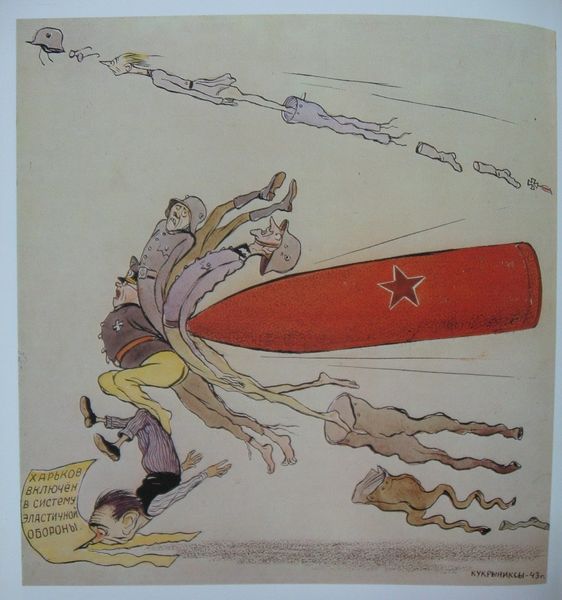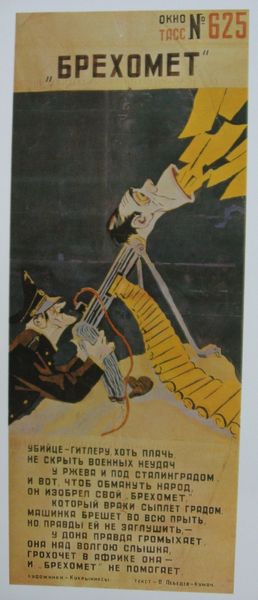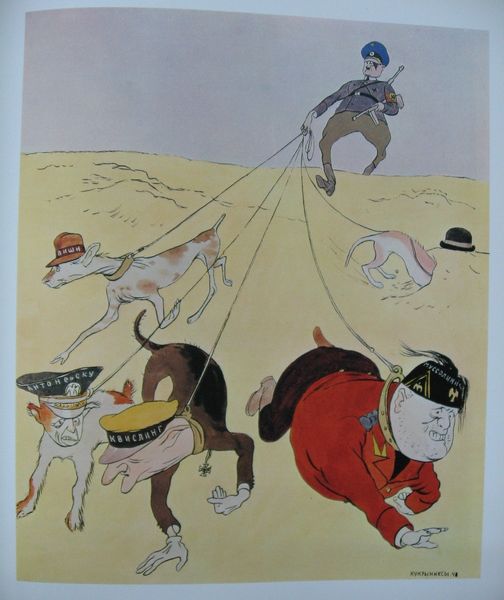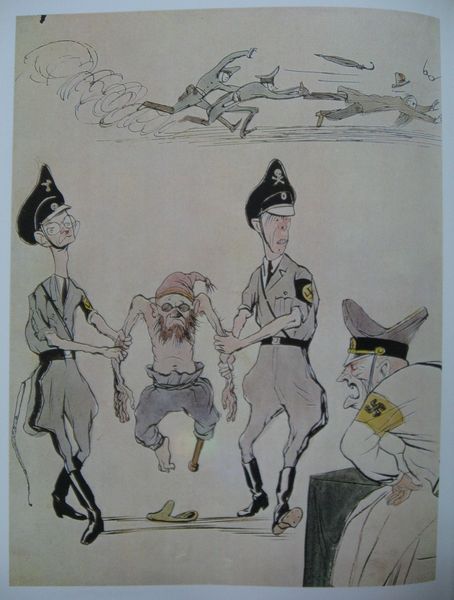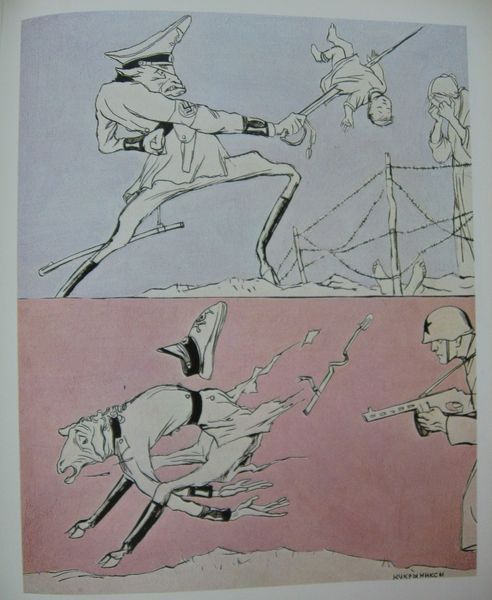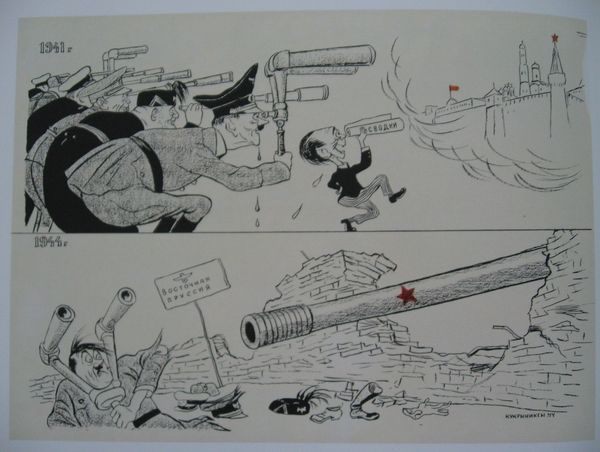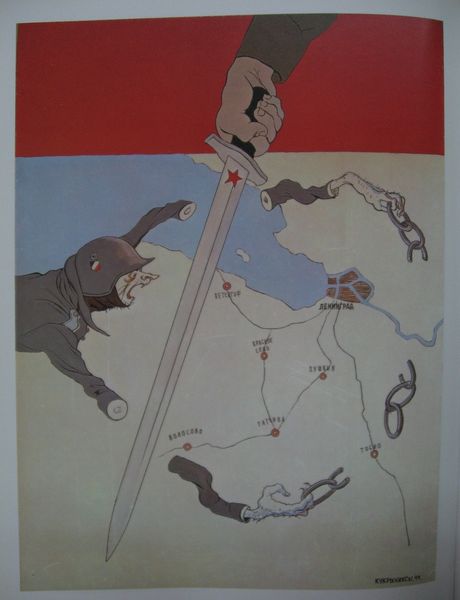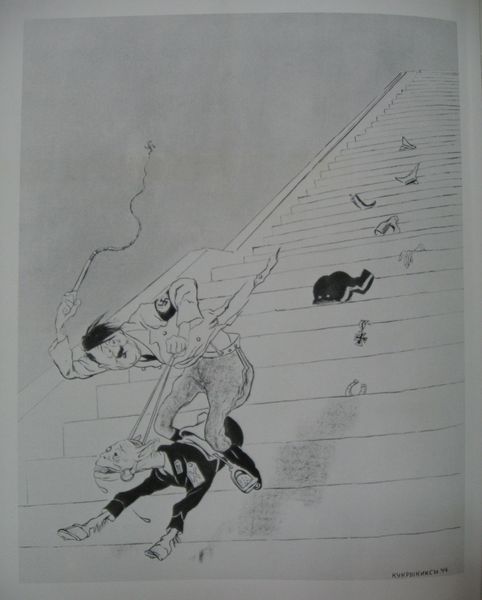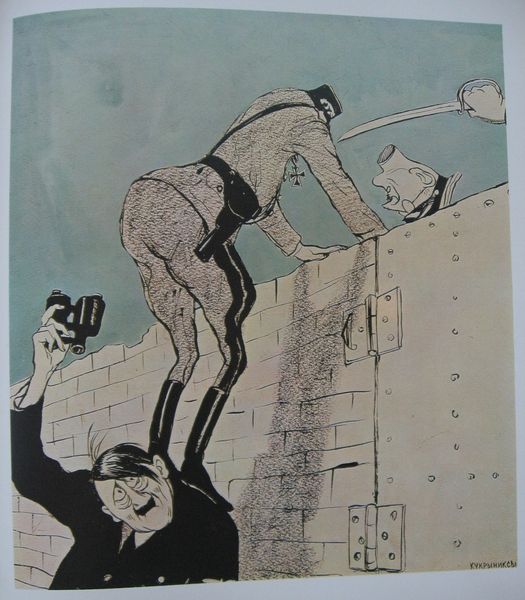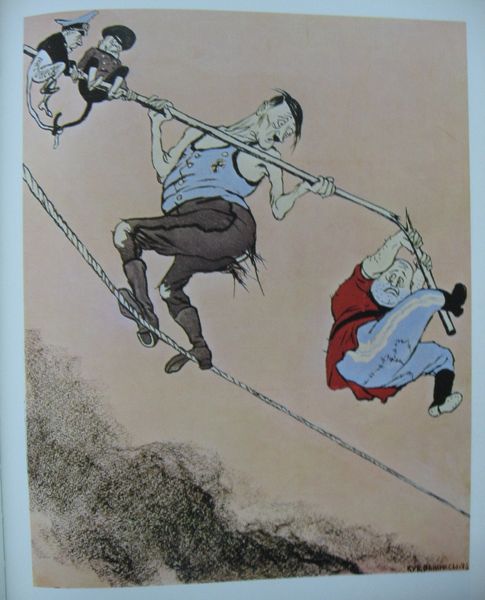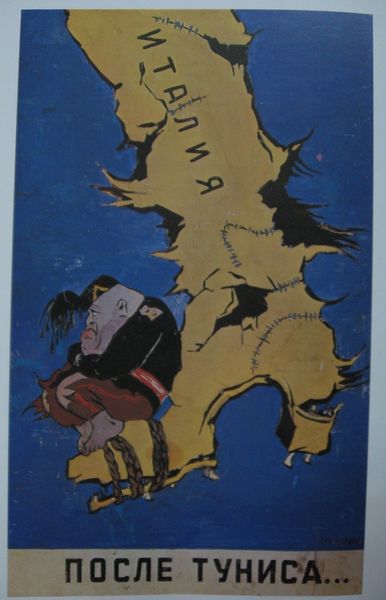
graphic-art, print, poster
#
graphic-art
#
narrative-art
# print
#
war
#
soviet-nonconformist-art
#
text
#
famous-people
#
soldier
#
history-painting
#
poster
Copyright: Kukryniksy,Fair Use
Editor: This print is titled "Back and Forth (TASS Window #897)," made in 1944 by Kukryniksy. The imagery is… intense. There’s a cannon pointed at a ghostly figure, and a line of soldiers devolving into skeletons. How do you interpret this work? Curator: It's fascinating to consider this poster within the context of wartime propaganda. The "TASS Windows" were a series of posters produced quickly and disseminated widely throughout the Soviet Union during World War II. They served as visual dispatches, bolstering morale. Note the direct, graphic depiction of the enemy as skeletal figures—what impact do you think that would have on viewers? Editor: I imagine it’s pretty powerful. It completely dehumanizes the opposing force. Curator: Exactly. This dehumanization, coupled with the textual elements in the artwork – slogans, essentially – aimed to unify the populace against a common enemy. What else strikes you about its public role? Editor: Well, the title "Back and Forth" implies a sense of turning the tide, right? From offensive to defensive. It presents Leningrad's resilience and the eventual repelling of the Nazi forces, providing visual evidence to reinforce the belief that Leningrad did not yield. Curator: Precisely! The piece embodies the socio-political aim of mobilizing a nation under siege through the art’s specific narrative and iconic use of text as slogan. It’s an excellent example of art functioning directly as a tool for state messaging during conflict. Did this shed light for you about the social function of Soviet nonconformist art during wartime? Editor: Definitely. It shows how artists, even within strict political constraints, could wield their work as a persuasive cultural weapon. It gives a new way to understand political messaging!
Comments
No comments
Be the first to comment and join the conversation on the ultimate creative platform.
